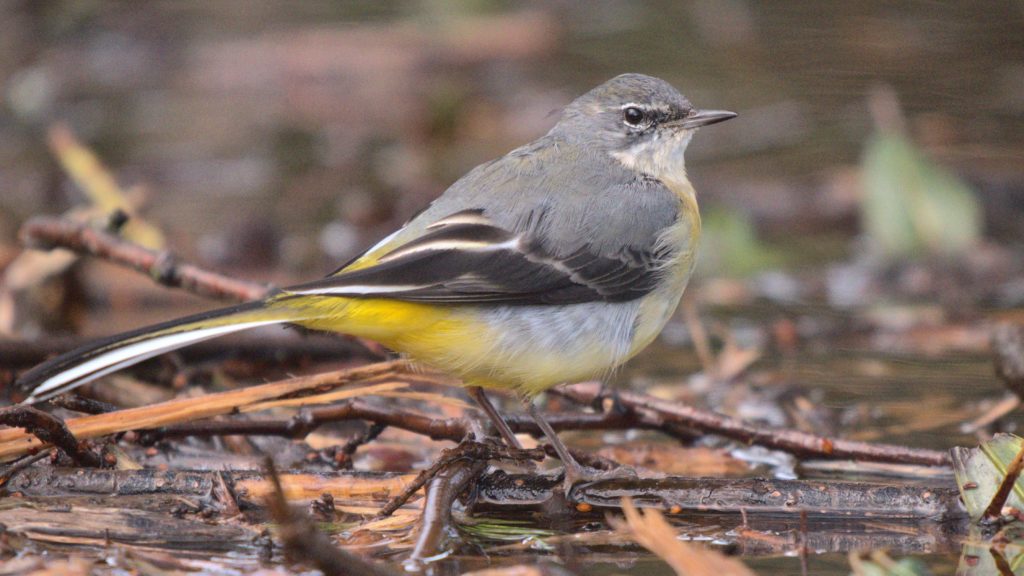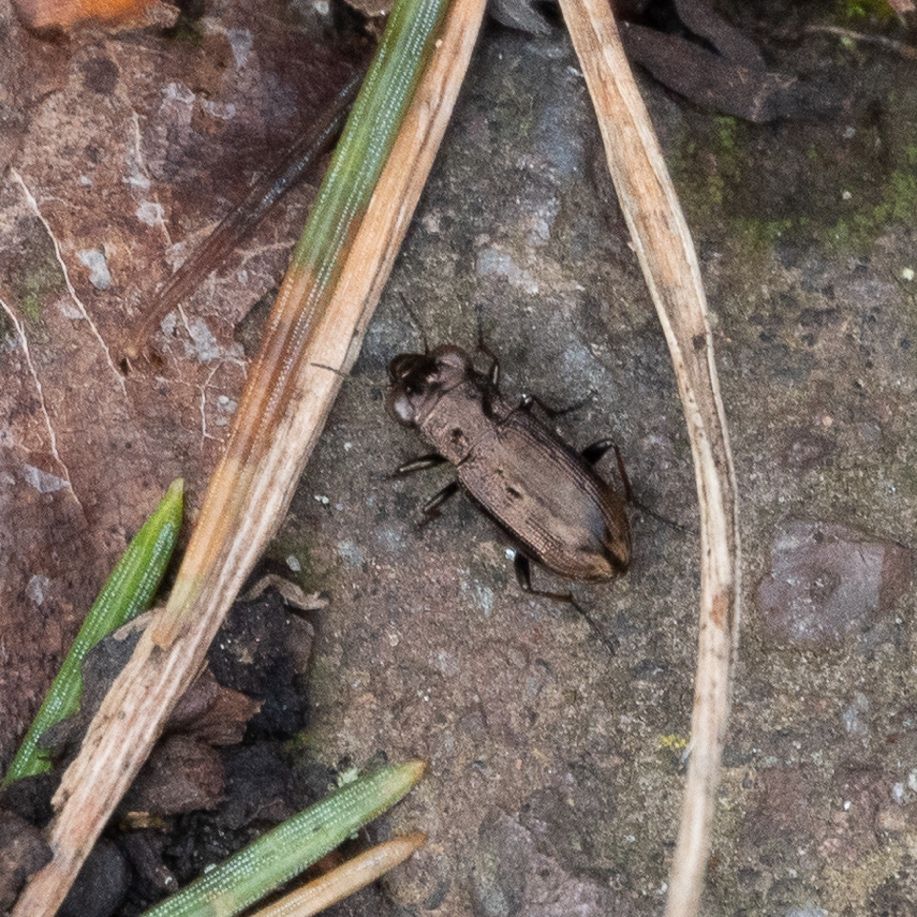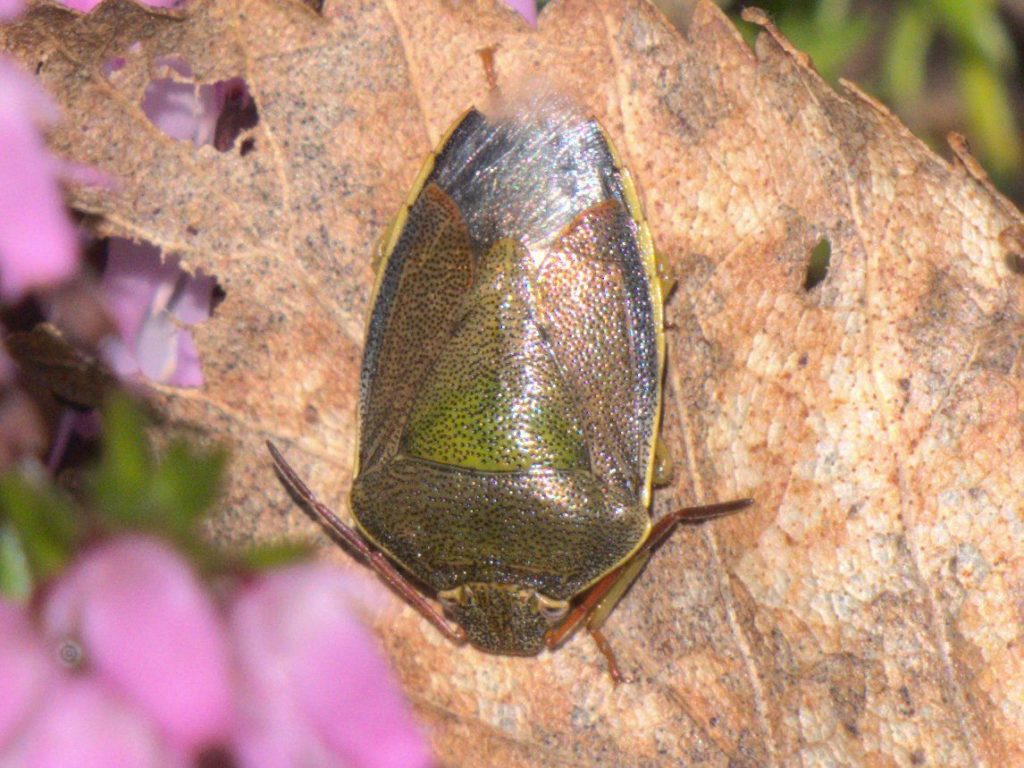
February 2020 will be remembered both locally and nationally for its exceptionally high rainfall, for the frequency of stormy weather, and for its lack of sunshine. There were two named storms on successive weekends: Ciara on 8/9th and Dennis on 15th/16th. The Garden was closed as a result for most of the week of 8th–15th as well as on some other days during the month. Sunshine was mostly limited to the first few days.
One beetle species was added to the Garden’s wildlife list during February (see under Invertebrates below), taking it from 1,132 to 1,133.
Birds: Thirty-three bird species were recorded at RBGE during February 2020 – a respectable total given the mostly dreadful weather. Unlike January, most were of common residents or at least species that regularly visit. Of those less frequently seen, there were 13 Redwing sightings, 12 of Grey Heron, 10 of Great Spotted Woodpecker, 9 of Tree Creeper, 8 each of Collared Dove and Nuthatch, 6 each of Song Thrush and Sparrowhawk, and four of Grey Wagtail. Kingfishers were absent all month. Other birds that went unrecorded in February included Blackcap, Buzzard and Stock Dove. The complete list of 33 species recorded during February 2020 was: Blackbird, Black-headed Gull, Blue Tit, Bullfinch, Carrion Crow, Chaffinch, Coal Tit, Collared Dove, Dunnock, Feral Pigeon, Goldcrest, Goldfinch, Great Spotted Woodpecker, Great Tit, Greenfinch, Grey Heron, Grey Wagtail, Herring Gull, Jackdaw, Long-tailed Tit, Magpie, Mallard, Moorhen, Nuthatch, Oystercatcher, Redwing, Robin, Siskin, Song Thrush, Sparrowhawk, Tree Creeper, Wood Pigeon, Wren.
Mammals and amphibians: Foxes were recorded three times (18th, 23rd, 28th) and Badgers’ nocturnal grubbing activities continued to be noted on the lawns. Common Frog was seen on 3rd during one of the month’s more clement days.

Insects and other invertebrates: Unsurprisingly, due to the almost relentless poor weather and dull conditions, relatively few invertebrates were recorded in February 2020. No butterflies or moths were seen. Both Honey Bee and Buff-tailed Bumblebee were recorded on 4th, the only day of the month for which I have hymenopteran records. Marmalade Hoverflies were also flying on 4th, and a Common Drone-fly was reported on 7th, while the bluebottle Calliphora vicina was seen on 20th, and also on 27th when Phaonia errans was present with it at the edge of the Copse area. Gorse Shield-bug made an appearance on 29th. Another Phaonia species, photographed on 16th and tentatively identified by its observer as P. rufiventris (which would have been a new record for the Garden), is more likely to have been the similar species P. subventa which had been recorded last month as well. It was a good month, relatively speaking, for beetles: Common Springtail-stalker (Notiophilus biguttatus) was the month’s only new Garden record, while 7-spot Ladybird was seen on 7th and 23rd, Pine Ladybird also on 23rd and an unidentified Polydrusus weevil species was hiding away in a gorse bush on 29th. Spotted Wolf-spiders were seen on 27th and 29th.

